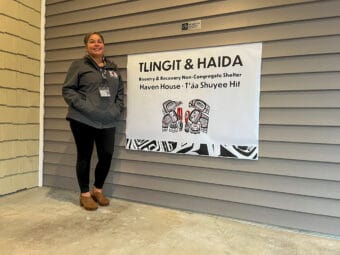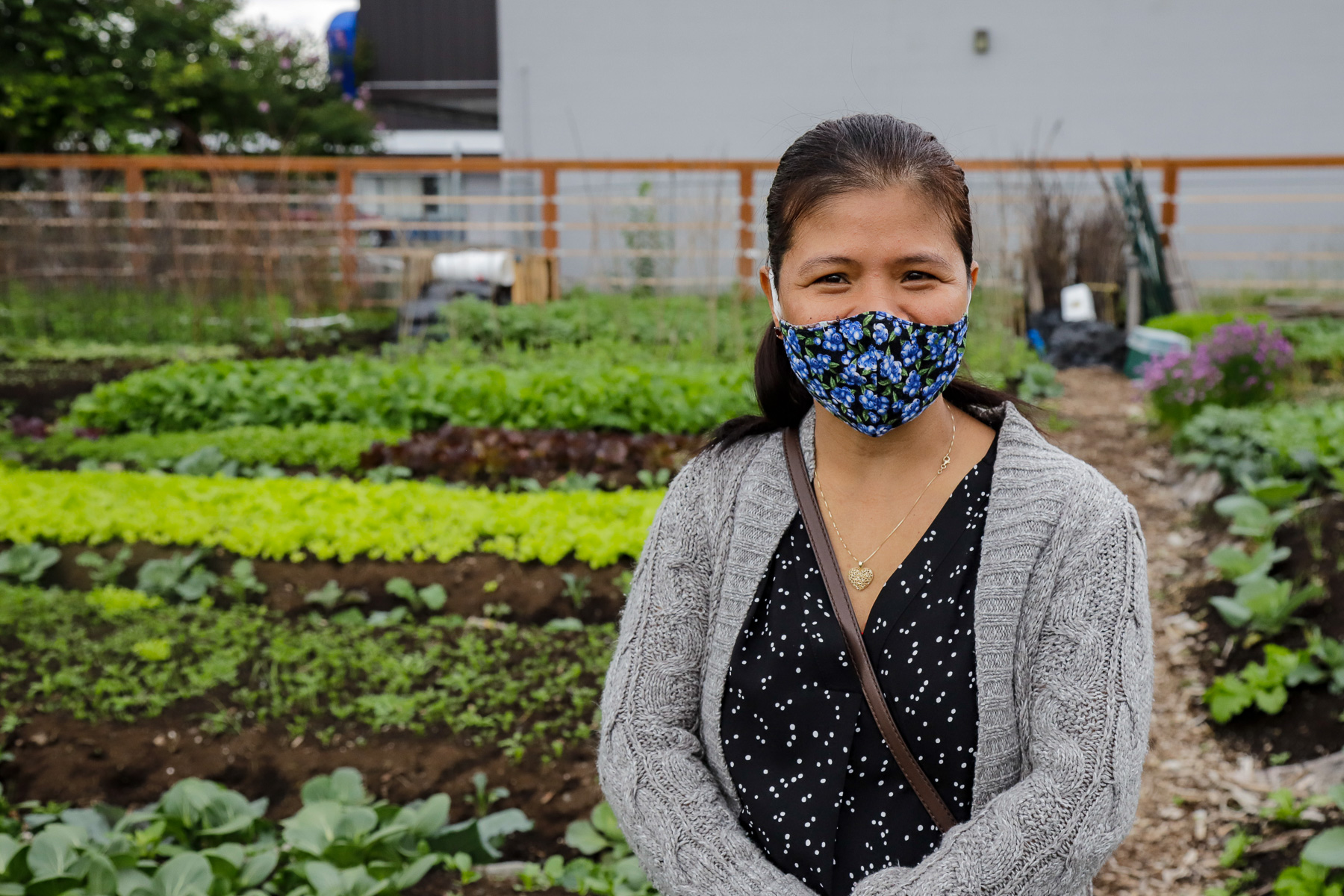
On opening day for Grow North Farm’s third season, Cherry Tacang walked between her neat rectangular plots teeming with vibrant greens.
“This is mustard greens, and this one is bok choy, and this one is spinach, and this one arugula,” she pointed out.
Despite the surrounding vegetation, it’s hard to forget that you’re in the middle of Anchorage’s Mountain View neighborhood. Planes landing at Merrill Field droned overhead and strip mall signs peeked over the fence.
Tacang, 34, and her husband are refugees from Myanmar. They’ve lived in Anchorage for more than five years, with their five children. Their oldest is 14 years old and the youngest is just five months.
Tacang said she farmed rice paddies and grew vegetables and corn in Myanmar, but that was very different from growing produce in Anchorage. She grows turnips here, for example, which were a new crop for her.
“Turnips, I don’t know how do you eat? I don’t know,” she said. “I eat cilantro, carrot, bok choy and salad.”
Tacang has worked her plot for all three years that the farm has been around. She’ll plant a few times throughout the summer, selling her produce at a weekday farm stand at Grow North Farm and at the Muldoon Farmers Market on Saturdays.
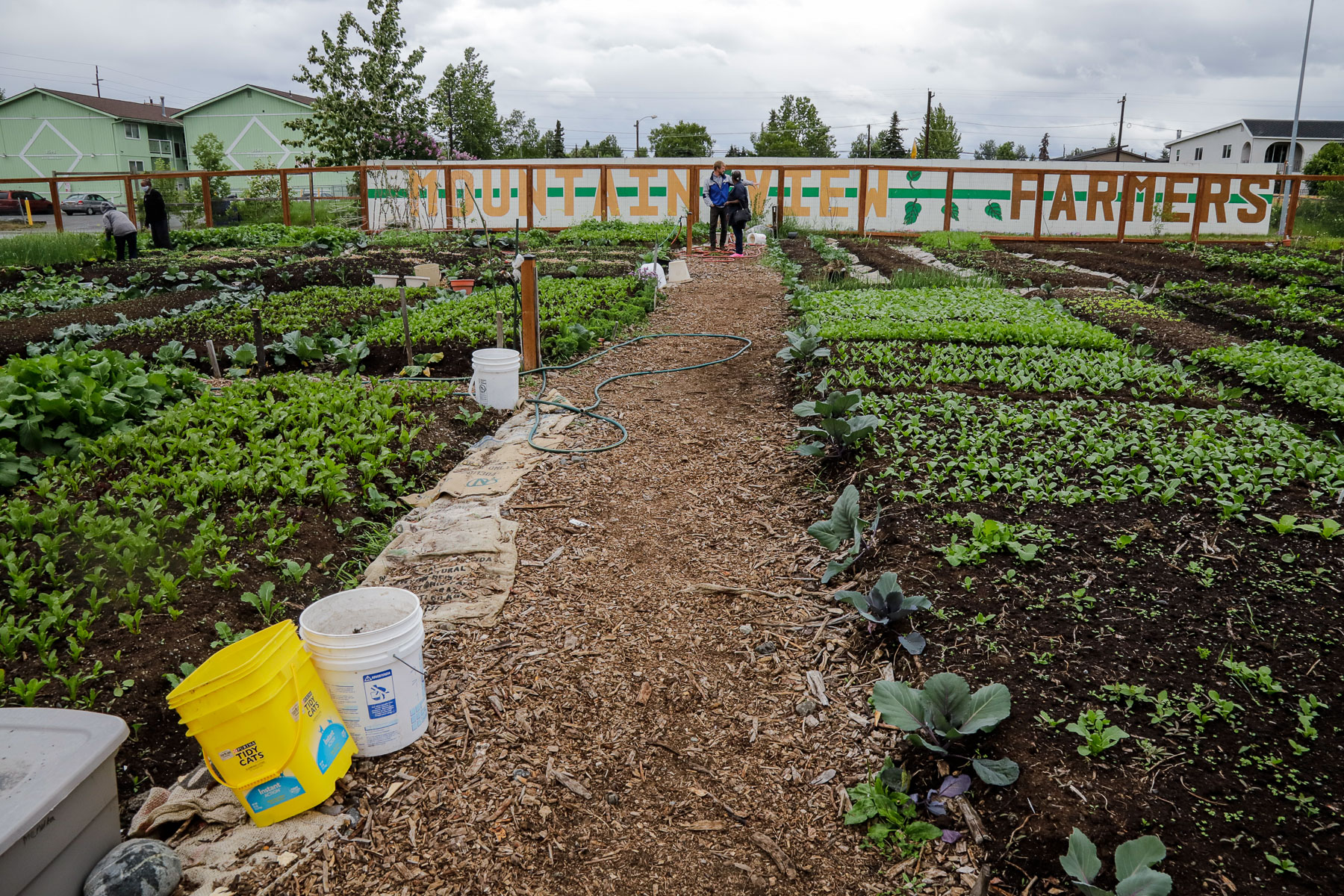
The Mountain View farm took the place of a vacant parking lot. Today it’s tended by more than 20 immigrant and refugee farmers who live in Anchorage.
Grow North Farm is a partner effort between Anchorage Community Land Trust and Catholic Social Services. The nonprofits provide a farm training program and business development support for refugees and immigrants like Tacang, who go on to have their own plots at the farm for a nominal fee.
It’s a flexible environment that allows people like Tacang to balance work with raising a family.
“Only my husband was working, and we needed some more support,” Tacang said through a translator. “Working as a gardener, I can stay with my kids, since they’re young. And I have the extra money to support my family.”
And after years of saving, Tacang and her husband bought a house last year, in part, because of the work she does at Grow North.
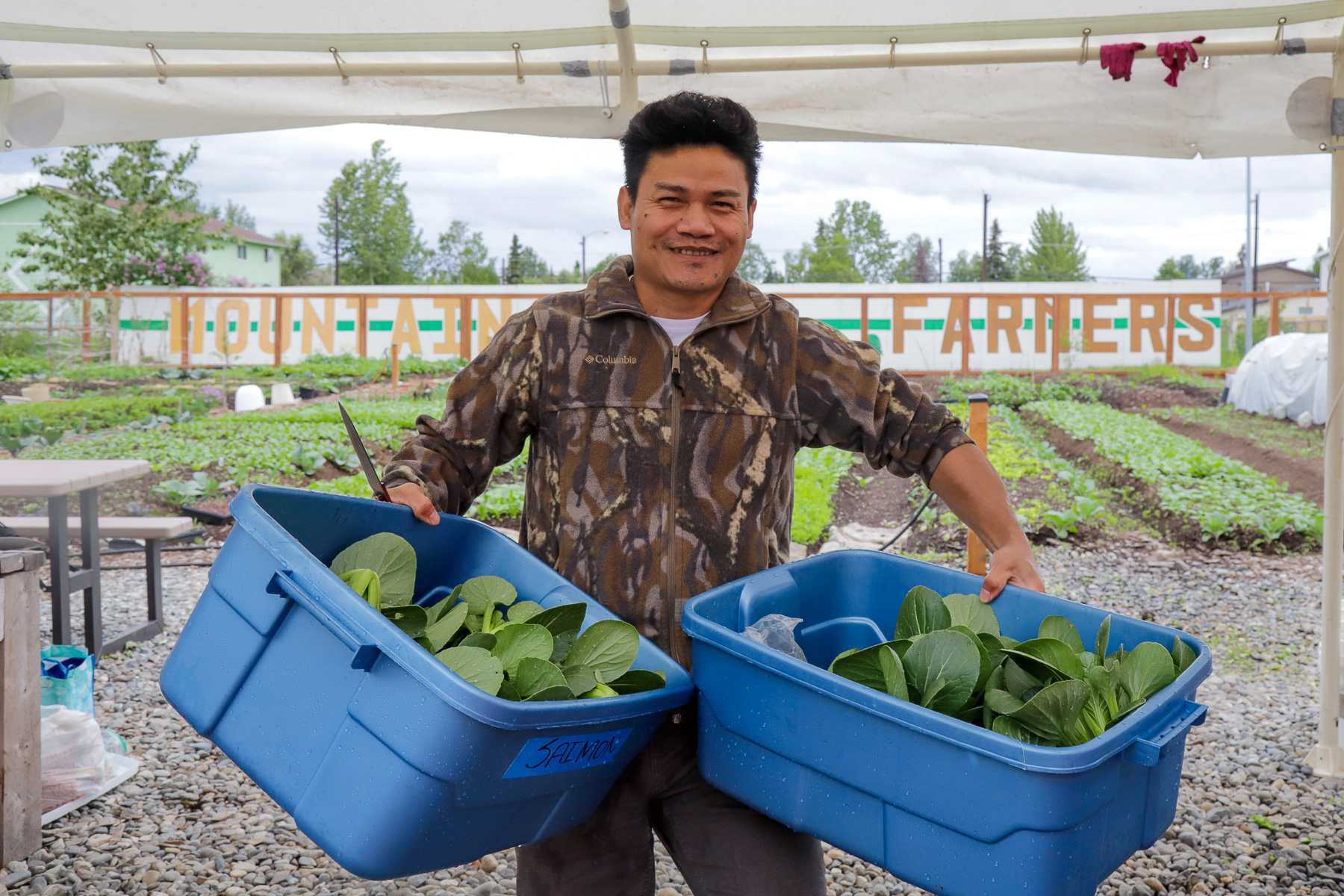
“The norm is Cherry’s story, not the exception,” said Issa Spatrisano. She works for Catholic Social Services and as the State of Alaska’s refugee coordinator.
Spatrisano helps settle refugees from all over the world — Eastern Europe, Congo, Sudan, Somalia, Iraq, Myanmar and more. These are people who have been forced to leave their country and gone through an often harrowing process just to be eligible to come to Alaska.
So when they finally arrive, Spatrisano said, there are some clear goals — good health and well-being, reliable transportation and employment and self-sufficiency. The farm training program is a big part of that last one.
“If you grew rice in Burma, it did not prepare you to grow turnips in Alaska,” she said. “The training program — a lot of new arrivals will do that for a year or two years, learn the basics of Alaskan farming.”
In recent years, refugee resettlement in Alaska has declined due to Trump administration policies. And last year it dropped to almost no new arrivals due to COVID-19.
Spatrisano said she expects refugee resettlement to ramp back up in the next few years. Normally, she said, her caseload would be about 500 to 600 people, with around 130 new arrivals each year.
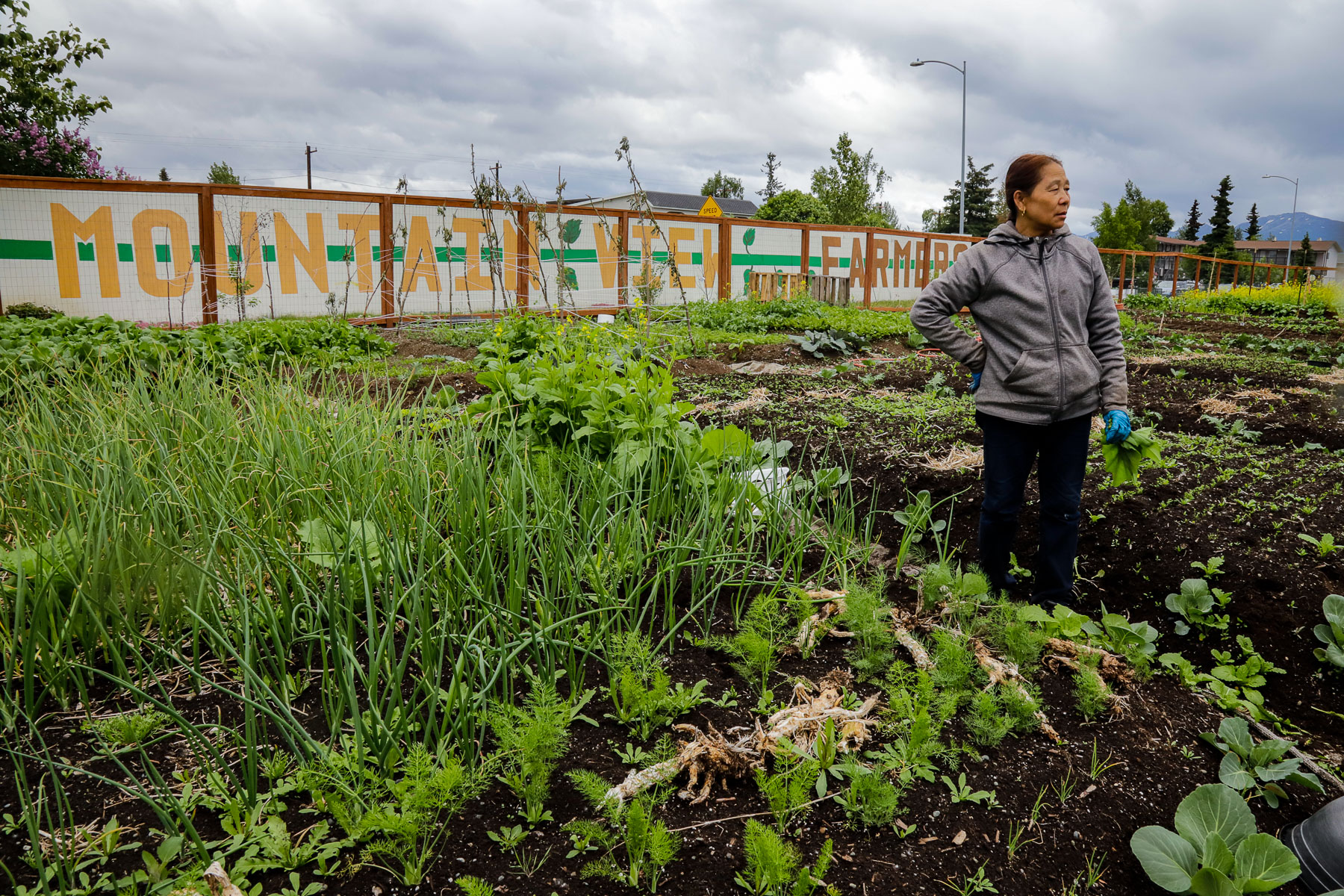
New community members from around the world makes Alaska a richer and more vibrant place, Spatrisano said.
“All of us figure out everyday what it means to be Alaskan. And refugees are part of that story,” she said.
Grow North Farm strives to integrate refugees into the community while preserving individual cultures. Emily Cohn, a spokesperson for the Anchorage Community Land Trust, said a group of Congolese women sourced seeds for a type of amaranth called dodo that they had back home. It was so popular among Congolese families in Anchorage, they didn’t even get a chance to open it up for public sales, she said.
“The space, it is providing economic opportunity, but it is also really, truly providing a space of prosperity and belonging and community for participating farmers that is just as integral as the opportunity to earn an income,” Cohn said.
Cohn said most Grow North farmers have other sources of income on top of their farm work.
Farm sales more than tripled from $20,000 to $70,000 between the first and second seasons, and Cohn expects this one to be even more successful. Also, she said, they’re looking for ways to expand the farm, which has been at capacity since it opened, to provide more growing space to farmers.
This year the farmers have expanded their offerings too.
In addition to produce, they’re selling spice blends and other prepared foods. There’s hot food from global cuisines sold every Thursday. And people can sign up for a weekly produce box subscription. All vendors are WIC and SNAP certified. On Tuesdays, all produce is half off for WIC and SNAP users.
At the farm stand on opening day, Ella Nash and her sisters walked around, enjoying date-filled Somali tea cookies and admiring the produce they bought.
“I just think it’s such a great idea. It really pulls the community together,” Nash said. “And it really took off last year. I mean, sometimes they were running out of things before I could get down here.”
This week though, Nash made it in time to buy radishes, bok choy and arugula from Tacang’s farm stand.

